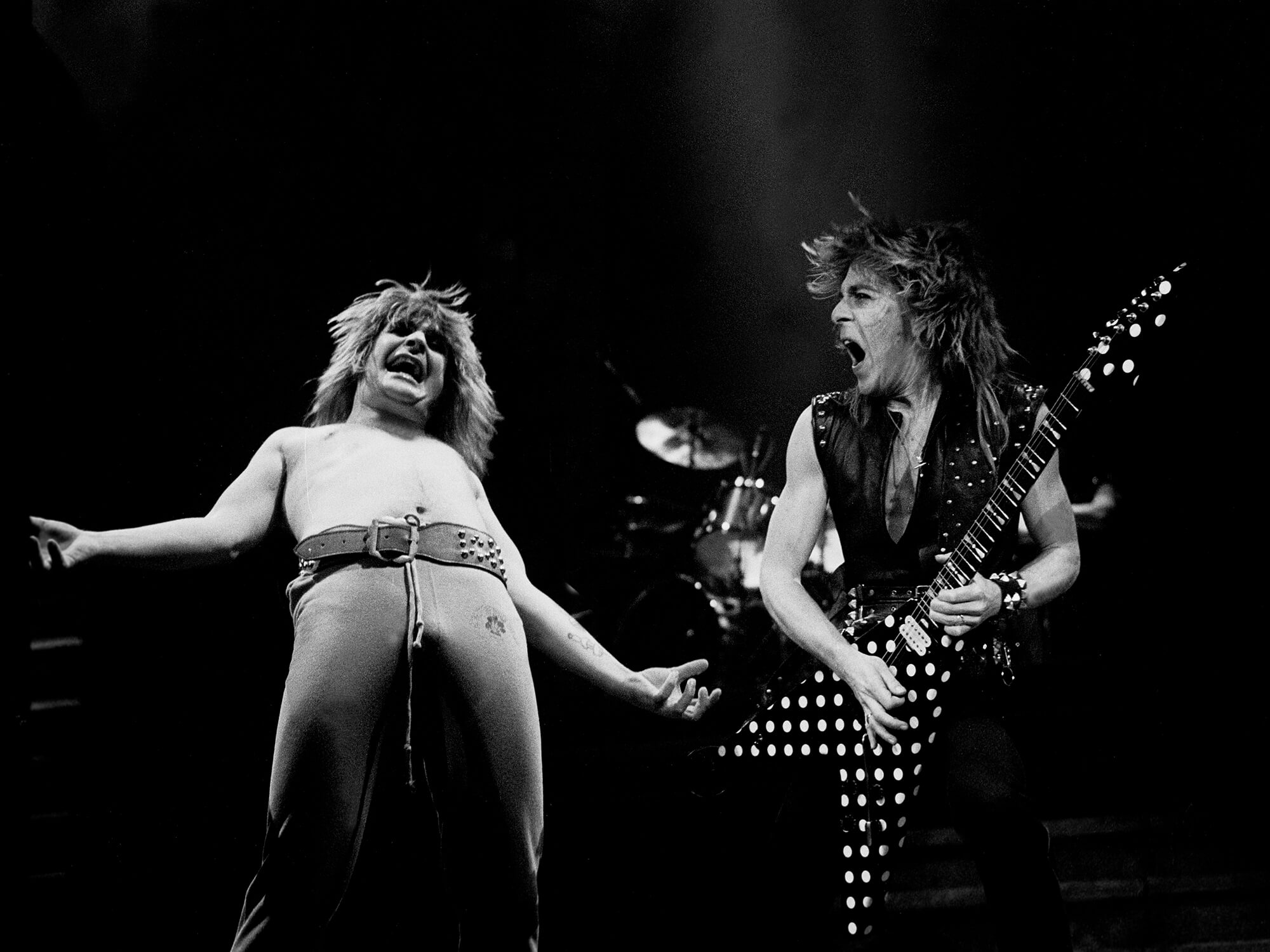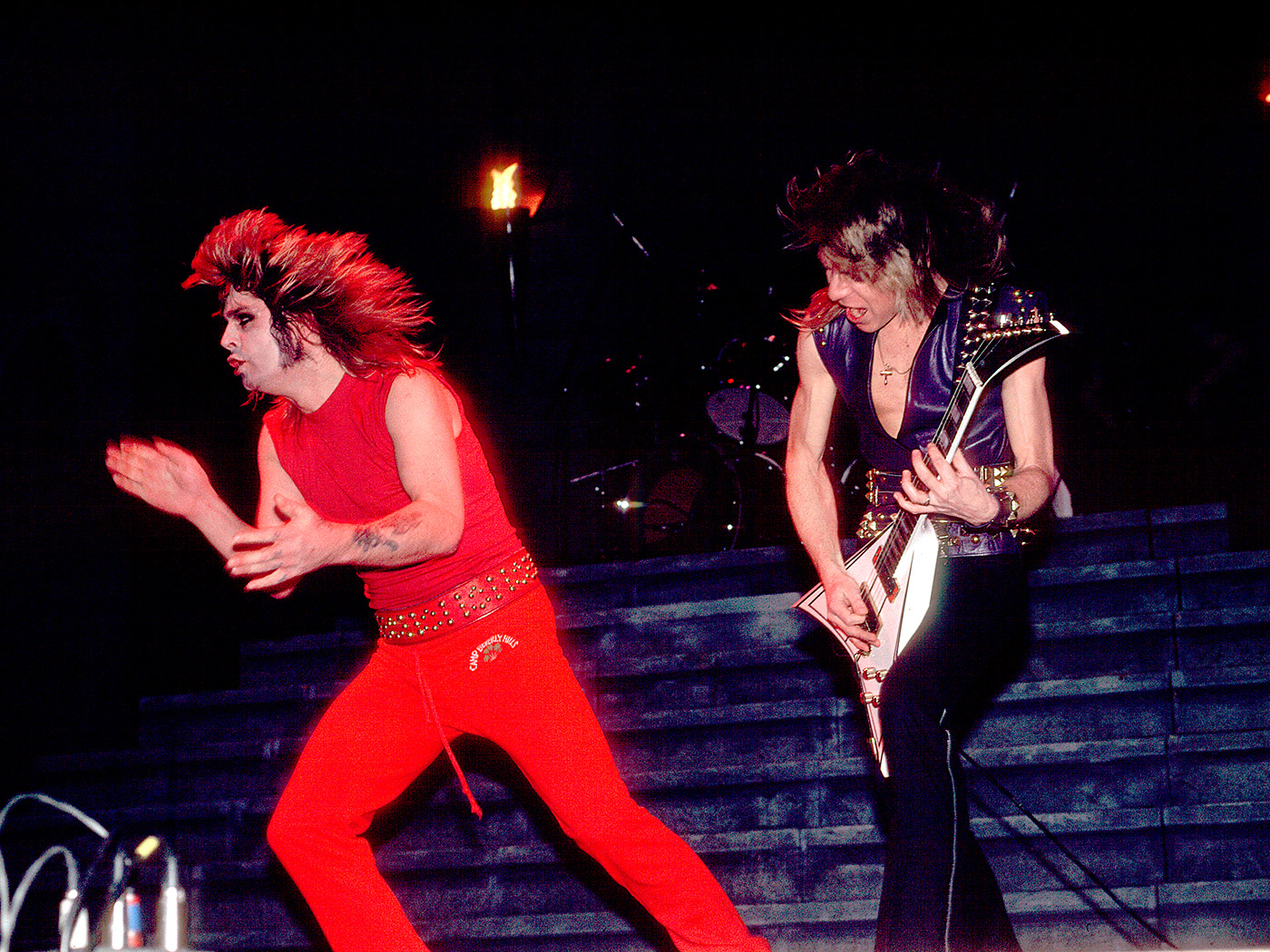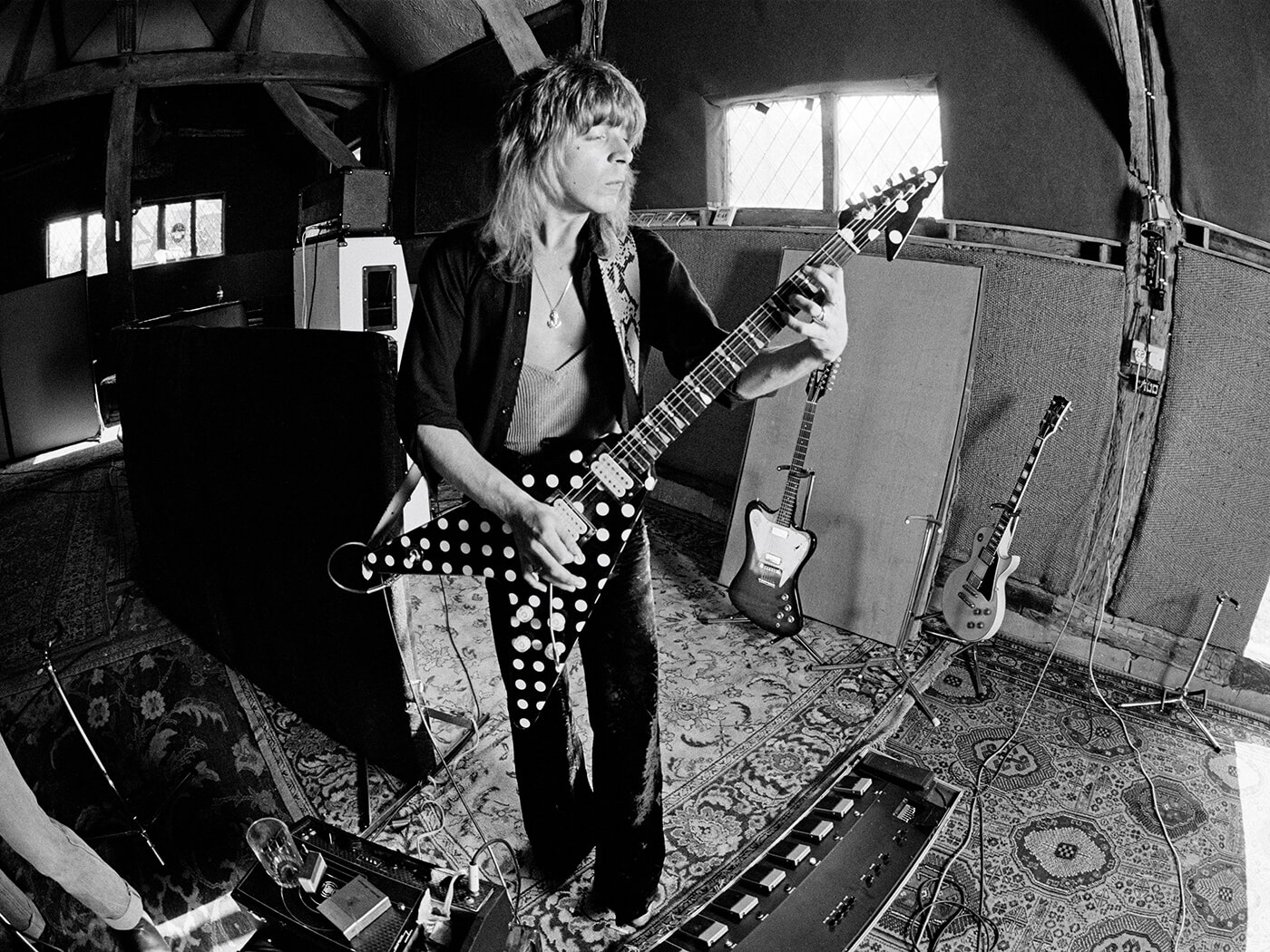The Gear Used By Randy Rhoads on Blizzard of Ozz
It’s one of the most important guitar albums of the 80s, but what gear did the late, great Randy Rhoads use for his finest hour?

Randy Rhoads on stage with Ozzy Osbourne in 1982. Image: Paul Natkin/Getty Images
Blizzard of Ozz was the debut solo album of Black Sabbath legend Ozzy Osbourne, but for guitar fans it has a more important purpose – for man, it was their first introduction to a young guitarist by the name of Randy Rhoads.
- READ MORE: A Brief History of Epiphone Guitars
In truth, Rhoads was a veteran of the LA hard rock scene before he scored the gig in Ozzy’s band, notably as the focal point of Quiet Riot, but the freedom afforded him by Osbourne awakened something in Rhoads, who would ascend to a new plane of neoclassical rock excellence on the album.
Without Rhoads, songs like Crazy Train and Mr Crowley could have been very different indeed, and this is the gear he used to get there.
As a veteran of the LA hard rock scene it’s no surprise that Rhoads was using a 100-watt Marshall amplifier [a 1959 Plexi] with two 4×12 cabinets in conjunction with a Variac. Similar to Eddie Van Halen, he would turn the voltage down to 90 or 92 degrees to achieve his sound on the record.

The Marshall was modded at one point although it remains unclear if this was before or after the recording of Blizzard of Ozz. Danny Thomas, who was tasked with designing the Rhoads Signature Series Marshall that came out in 2008, explained later that the amp had a cascade gain mod that was done by Phil Millichamp,
“After Randy’s death, they took all of the equipment they received back from the Ozzy tour out of storage and brought it over, and we opened up the flight cases and took out the gear,” he recalls. “We checked it through, drew sketches of the circuits, catalogued it, measured it, and took photos. Then we put that data into a prototype. Surprisingly, when I was checking the circuits, I did find something that was out of place, a resistor that had been cut and moved, so I duly noted that. I also noted who had wired and tested it, and when we got back to the factory, I called the test manager from the day [Phil Millichamp].
“He remembered meeting Randy Rhoads and told me he’d tested and modded the amp for him. I asked him what he’d done, and he’d cascaded the first valve: the inputs from the normal channel get fed back through the input of the high treble channel. He said we used to do that occasionally for some people when they wanted a bit more gain and guts, and, as Randy had asked him if there was anything he could do to get it a bit beefier, that’s what he did.”
In a 2022 interview with Guitar World, producer Max Norman recounted Randy Rhoads’ unique recording setup at Ridge Farm Studio, nestled in the English countryside,
“Randy’s amps were set up in a stone room underneath the control room; they were facing into the stone steps that led down to the stone room. Randy would stand at the top of the steps with two big 15-inch Tannoy playback monitors on either side of him, and he’d blast solos over the backing track.”

Rhoads was no stranger to using effects during the Blizzard era either, however the components on his pedalboard have never been fully revealed. Ozzy used to call the pedalboard the “chip pan” – allegedly Ozzy gave this name to the pedalboard because it created so much hiss and noise that it sounded like chips (or fries if you’re American) sizzling in a deep-fat fryer. This was likely the result of the board not including a noise gate/noise suppressor.
Randy’s pedalboard was somewhat unique in that all the pedals in the chain had been disassembled and placed into one large enclosure and encased in resin. This practice of “potting” electronics in epoxy resin was commonly done to protect components from moisture and vibration – common enemies of the touring rig. It can also help reduce interference by offering added insulation. But sometimes it was simply done to hide the circuitry. Many have suspected that the stock pedals used in Rhoads’ pedalboard were modified and that’s entirely possible.
Some have claimed that the board was built by the legendary Pete Cornish, but it seems much more likely that it was built by Pete “Pedalboard” Holmes. This is supported by the fact that Cornish has since denied having anything to do with building the board and Holmes was cited in the album credits of Blizzard of Ozz.
We do know what was in the pedalboard… sort of… The circuitry included a Cry Baby Wah, an MXR Distortion+, an MXR 10 Band EQ, an MXR Stereo Chorus, an MXR Flanger, and a Roland Volume pedal. Outside the pedalboard, he used a number of delays, though it remains unclear which one he used for the recording. And although he had a Stereo Chorus, the layering effect on the record came from Rhoads’ incredible ability to replicate his guitar parts so precisely that it almost seemed like a chorus effect. But again, some of the circuitry may have been modified when it was placed into the pedalboard.

Rhoads used two guitars during the first Ozzy-sessions: His iconic Polka Dot V, built by Karl Sandoval, and a 1974 Gibson Les Paul Custom. When Rhoads was still in Quiet Riot, the band collectively purchased a white Les Paul Custom for Randy’s use while in the band. The guitar remained fairly stock with the exception of a custom pickguard with Randy’s name on it, and a brass poker chip.
Many believed that the tuners were replaced with Schallers although typically Gibson Custom Shop Les Pauls in 1974 featured tuners made by Schaller anyway. The guitar retained its original pickups, which, per Gibson specs, would have been ’74 Super Humbuckers.
The polka dot Flying V came to be one of Randy’s best-known guitars after it was finished in September of 1979. Randy had ordered it after playing a previous Sandoval guitar that had been made for George Lynch. Lynch and Rhoads toured together during the Quiet Riot days as Lynch was in a band called Xciter. Rhoads loved Lynch’s guitar and reached out to have one of his own made – he reportedly paid $740 for it [$3,032.32 today, when adjusted for inflation]. It featured a Danelectro neck set into a custom body which featured a DiMarzio Distortion Plus at the bridge and a DiMarzio PAF in the neck, and a Fender style tremolo bridge.
The album also contains a 50-second instrumental song, “Dee”, for this song, Rhoads used his Martin acoustic with an AKG 451 microphone, then doubled the part on a classical guitar – we’re still unsure what model this was but some have claimed it was a Guild.
